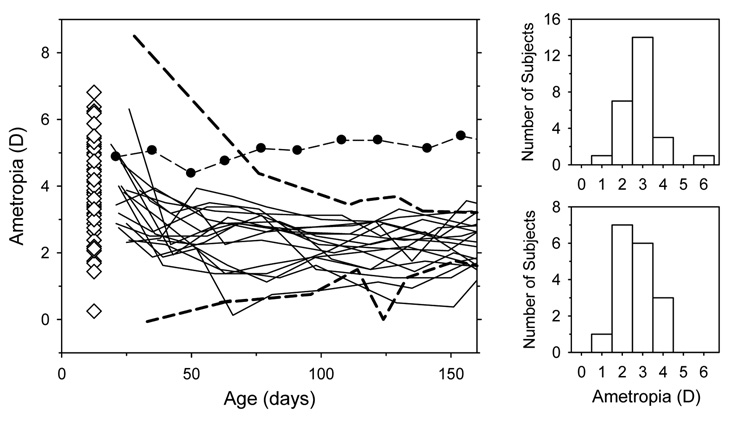Figure 5.
Left. Spherical-equivalent refractive errors plotted as a function of age for the non-treated fellow eyes of the 13 experimental monkeys in the longitudinal subgroup (thin solid lines). For comparison, the dashed lines enclose the range of refractive errors obtained from 25 normal monkeys that were reared with unrestricted vision and that showed evidence of emmetropization. The filled symbols connected by dashed lines illustrate the refractive errors for an untreated monkey that, for unknown reasons, did not exhibit emmetropization. The open diamonds, which for clarity are plotted at 12.5 days of age, represent the right eye refractions for the 58 infants in the cross-sectional group obtained at 24 days of age. Right. Frequency distributions of refractive error (positive values indicate hyperopia) obtained at about 160 days of age for normal monkeys (upper) and for the non-treated fellow eyes of the 13 experimental monkeys (lower).

